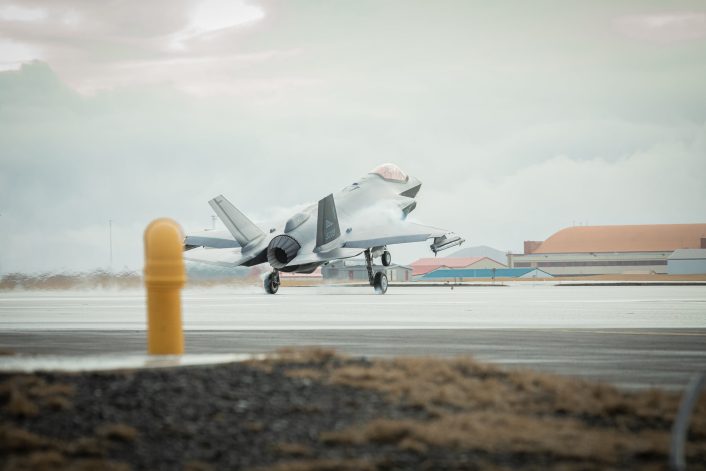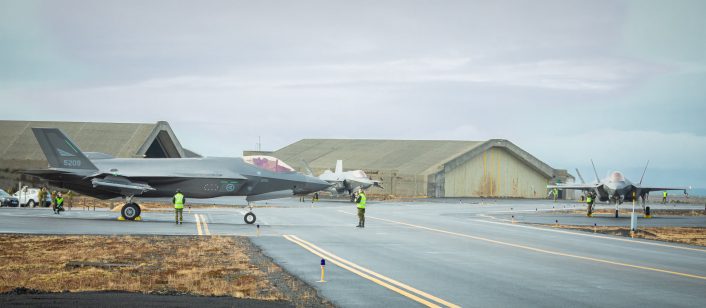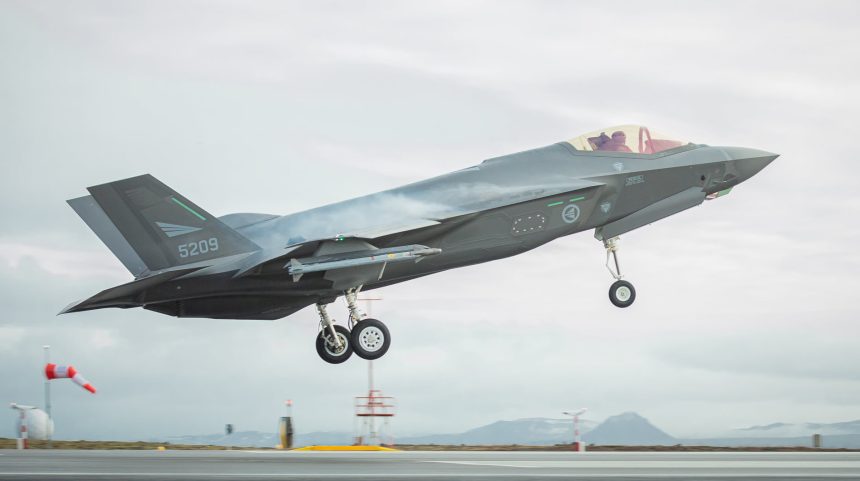For the second time, the Royal Norwegian Air Force F-35A Lightning II jets have deployed to Keflavik, Iceland, to support NATO’s Icelandic Air Policing.
Four RNoAF F-35A Lightning II jets have deployed to Iceland to carry out the NATO’s Icelandic Air Policing mission. It’s the second time the Norwegian Lightnings deploy there to perform Quick Reaction Alert duties in support of NATO’s Airborne Surveillance and Interception Capabilities to meet Iceland’s Peacetime Preparedness Needs (ASIC IPPN) mission. The purpose of the NATO mission, initiated in 2008 after the withdrawal of US forces from the island, is to provide air surveillance and interception coverage over Iceland, in order to maintain the integrity of the NATO airspace.
RNoAF F-35s have already deployed to Iceland to support ASIC IPPN mission last year, when four F-35As of the 332 Sqn operated out of Keflavik for about three weeks.
Images of the Norwegians deploying to the High North released by the NATO Allied Air Command show that the RNoAF F-35As involved in the QRA duties are equipped with Live AIM-9X Sidewinder AAMs (Air-to-Air Missiles) on the external launchers: this is interesting because, for instance, the Italian Air Force, that was the first one to deploy the F-35 under NATO command to carry out the Icelandic Air Policing mission in October 2019, uses a configuration featuring “only” AIM-120C AMRAAM missiles in the internal weapons bay. Both the ItAF in the past and RNoAF F-35s now, carry the RCS Enhancers/Radar Reflectors.

Norwegian F-35s are unique compared to other nations’ F-35s as they are the only ones at the moment to use a drag chute during landing, housed in a special fairing on the upper rear fuselage between the vertical tails. It can be used to rapidly decelerate Norwegian F-35s after landing on icy runways under windy conditions.
According to the official F35.com website, the pod “distinguishes Norwegian, Danish, Dutch and Belgian F-35As from other F-35s,” although the system is at the moment used only by the RNoAF jets.
The system is designed as a wing pylon so that the pod can be installed and removed with minimal time and effort. The pod contains the drag chute system that rapidly decelerates the F-35s after landing on the country’s short, icy runways. The pod is specifically designed to minimize effect on radar cross section and ensure the aircraft maintains stealth characteristics while flying.
Akin to the conventional parachute, the F-35 drag chute system is a device used to slow the motion of the F-35A and provide control and stability for pilots. The chute creates aerodynamic drag also known as air resistance. The F-35A drag chute uses the force of wind pushing in the opposite direction of the motion of the aircraft to safely land on short, wet and icy runways.
To deploy the chute, the pilot flips a switch up on the upper left side of the instrument panel. The switch activates hydraulic actuators that open the pod to release a Kevlar parachute. Once the aircraft is slowed sufficiently, the pilot flips the same switch down to release the drag chute as the aircraft comes to a stop.

Norwegian F-35As achieved the IOC (Initial Operational Capability) on November 6, 2019, becoming the third European country to reach IOC with the F-35 after Italy and the UK. The deployment to Iceland is a milestone towards full operational capability in 2025. The RNoAF plans to replace its F-16s, that are currently performing Quick Reaction Alert missions, by 2022, when there will be enough F-35s (out of 52 ordered), pilots and maintainers available to deploy to Evenes Air Station (Northern Norway).









